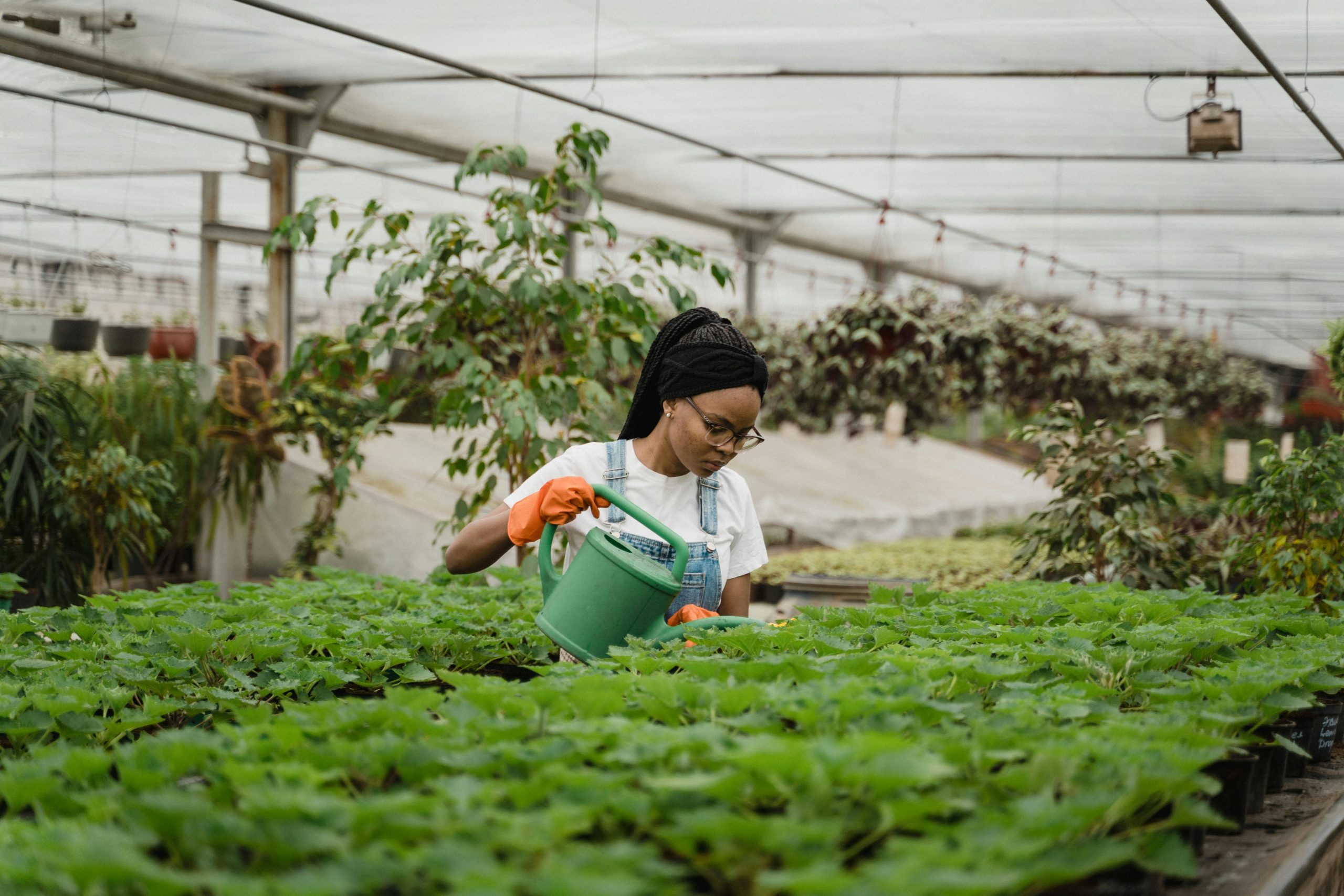Introduction: The Growing Potential of Agribusiness in Kenya
Agribusiness is rapidly emerging as a key sector for young entrepreneurs in Kenya, offering diverse opportunities for innovation and economic growth. As agriculture remains a cornerstone of Kenya’s economy, contributing significantly to GDP, more young entrepreneurs are recognizing its potential—from small-scale farming to advanced agrotech solutions.
This article explores some of the most promising agribusiness opportunities for young entrepreneurs in Kenya. It highlights ventures that leverage the country’s rich agricultural resources, modern farming techniques, and evolving market trends.
However, success in agribusiness requires more than passion—it demands access to land, a deep understanding of the market, and strategic planning. Fincare Investments Limited play a crucial role in this space by facilitating land access through leasing or purchase, enabling farmers to engage in high-yield crop production and sustainable agricultural practices.
Section 1: Understanding the Agribusiness Landscape in Kenya
Why Agribusiness is a Lucrative Opportunity for Young Entrepreneurs
Kenya boasts fertile land and favorable climatic conditions that support year-round agricultural activities. Food is a fundamental necessity, so agribusiness presents a strong investment opportunity driven by the country’s growing population and increasing demand for agricultural products.
Rapid urbanization has further expanded market opportunities, particularly in the Nairobi Metropolitan area, which includes Nairobi and its surrounding towns and is home to over seven million people. This urban growth creates a consistent and lucrative demand for fresh farm produce.
Beyond traditional farming, agribusiness in Kenya has evolved into diverse sectors, including export farming, horticulture, and organic agriculture. With rising local and global demand for food, young entrepreneurs have a unique opportunity to develop innovative and profitable agribusiness ventures.
Key Challenges in Agribusiness and How to Overcome Them
While agribusiness presents significant opportunities, young entrepreneurs in Kenya often face challenges when starting and scaling their ventures. Below are some common obstacles and strategies to overcome them:
- Access to Capital: Securing funding is one of the biggest challenges for young agripreneurs. To navigate this, consider starting on a small scale and gradually expanding as you build financial stability. Establish relationships with financial institutions that offer low-interest financing, such as SACCOs, to build a credit history and improve access to expansion capital.
- Market Fluctuations: Agricultural markets are highly dynamic and influenced by weather patterns, global demand, and price fluctuations. To mitigate these risks, diversify your agribusiness ventures and leverage market intelligence. Engaging with farming communities, including online forums and social media groups, can provide valuable insights and networking opportunities.
- Climate Change: Unpredictable weather conditions significantly threaten agricultural productivity, particularly for crops like maize and coffee. To enhance resilience, adopt climate-smart agricultural practices such as growing drought-resistant crop varieties, utilizing efficient irrigation systems, and implementing soil conservation techniques.
By strategically addressing these challenges, young entrepreneurs can build sustainable and profitable agribusiness ventures in Kenya’s evolving agricultural sector.
Section 2: Top Agribusiness Ideas for Young Entrepreneurs in Kenya
Horticulture Farming
Horticulture farming involves intensively cultivating high-value crops such as fruits, vegetables, flowers, and ornamental plants. It is a specialized branch of agriculture that focuses on producing, improving, and marketing these crops for local and international markets. Due to its high returns and growing market demand, horticulture farming is one of Kenya’s most profitable agribusiness sectors.
Key Aspects of Horticulture Farming
- Types of Horticultural Crops
- Fruits: Mangoes, avocados, bananas, pineapples, citrus fruits, passion fruits, and berries.
- Vegetables: Tomatoes, onions, cabbages, spinach, kale (sukuma wiki), carrots, cucumber and capsicum.
- Flowers & Ornamentals: Roses, lilies, carnations, chrysanthemums, and landscaping plants.
- Herbs & Spices: Coriander (dhania), basil, rosemary, mint, ginger, and garlic.
- Farming Methods
- Open-field cultivation: Traditional farming on open land for crops such as onion, tomatoes, cabbage, green capsicum, rosemary, mint, ginger, garlic, etc.
- Greenhouse farming: Controlled environments to enhance yields and quality; Ideal for colored capsicum, cucumber, basil, etc.
- Hydroponics & Vertical Farming: Soil-less farming techniques for space efficiency.
- Organic Farming: Growing crops without synthetic fertilizers and pesticides.
- Market Opportunities
- Local Markets: Supplying fresh produce to urban centers, supermarkets, and restaurants.
- Export Markets: Kenya exports flowers, fruits, and vegetables to Europe, the Middle East, and Asia.
- Processing & Value Addition: Producing juices, dried fruits, sauces, and herbal extracts.
- Challenges in Horticulture
- The initial investment is high for greenhouses and irrigation.
- Market price fluctuations.
- Pest and disease management.
- Post-harvest losses due to perishability.
- How to Succeed in Horticulture Farming
- Use quality seeds and seedlings.
- Apply modern irrigation techniques (drip irrigation).
- Practice integrated pest management (IPM).
- Network with buyers and exporters for better market access.
Livestock Farming
Livestock farming includes dairy farming, poultry production, and beekeeping—each offering lucrative opportunities for young entrepreneurs.
1. Dairy Farming
Overview
Dairy farming involves rearing cattle for milk production. Kenya has a strong dairy industry, and milk is a staple in most households. High-yield dairy breeds such as Friesian, Ayrshire, Guernsey, and Jersey are commonly reared.
Farming Methods
- Zero-Grazing: Intensive system where cows are kept in stalls and fed high-quality fodder.
- Semi-Intensive Grazing: A mix of stall feeding and pasture grazing.
- Free-Range Grazing: Cows are allowed to graze freely in open fields.
Market Opportunities
- Supplying fresh milk to local markets, milk processing plants, and cooperatives.
- Producing and selling dairy products like yogurt, cheese, and butter.
- Supplying breeding stock to other farmers.
Challenges & Solutions
- High cost of feeds → Grow your fodder (Napier grass, Lucerne) and use silage.
- Diseases such as mastitis → Regular veterinary care and proper hygiene.
- Market fluctuations → Join dairy cooperatives for stable pricing.
2. Poultry Farming
Overview
Poultry farming involves raising chickens, ducks, turkeys, and geese for meat and egg production. Chicken farming is the most common, with broilers (meat production) and layers (egg production) being the main focus.
Farming Methods
- Free-Range Poultry Farming: Birds are allowed to roam and feed naturally.
- Semi-Intensive System: Birds have limited movement but access to an outdoor space.
- Intensive System (Battery Cages): Birds are kept in cages for maximum production efficiency.
Market Opportunities
- Supplying eggs to households, supermarkets, and hotels.
- Selling chicken meat to butcheries, restaurants, and fast-food chains.
- Hatching and selling chicks to new poultry farmers.
Challenges & Solutions
- High feed costs → Formulate homemade feeds using affordable ingredients.
- Diseases like Newcastle disease → Implement proper vaccination programs.
- Market competition → Establish contracts with local hotels, schools, and retailers.
3. Beekeeping (Apiculture)
Overview
Beekeeping involves rearing bees for honey, beeswax, and other hive products. It is a low-cost, high-return agribusiness with minimal land requirements.
Farming Methods
- Traditional Beekeeping: Log hives are used in trees.
- Modern Beekeeping: Use Langstroth or Kenya Top-Bar Hives (KTBH) for higher yields.
Market Opportunities
- Selling raw honey in local and international markets.
- Processing and selling beeswax for candle making and cosmetics.
- Producing propolis and royal jelly for medicinal use.
Challenges & Solutions
- Pests (ants, beetles, wax moths) → Use hive stands and proper maintenance.
- Unpredictable flowering seasons → Plant bee-friendly trees and flowers.
- Marketing difficulties → Package honey attractively and build a strong brand.
How to Succeed in Livestock Farming
- Choose the right breed/species based on climate and market demand.
- Invest in proper housing, feeds, and disease management.
- Leverage cooperatives and agribusiness networks for better market access.
- Adopt modern technologies such as automated milking, feed formulation, and climate-smart farming.
Section 3: How Fincare Investments Limited Supports Agribusiness Entrepreneurs
Land Leasing and Sales for Agribusiness
Access to land is a fundamental requirement for any successful agribusiness venture. Fincare Investments Limited provides young entrepreneurs with affordable land options for leasing or purchase, enabling them to establish and expand their agricultural enterprises.
By partnering with Fincare Investments Limited, agripreneurs can secure land in strategically located agricultural regions such as Isinya, Kajiado County, Kenya—an area well-suited for crop cultivation and livestock farming. With access to prime agricultural land, young entrepreneurs can maximize productivity and create successful businesses.







